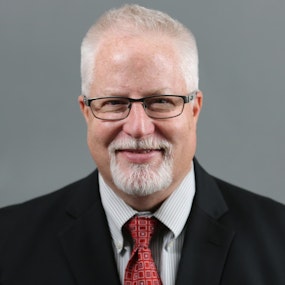
The unique nature of the profession and its development may have contributed to this conundrum. Several authors have studied this issue over the years (3-5) and a call to consider standardization has not yet yielded results that matter to the typical applicant. In the end, how do applicants navigate these challenges? An interview of our three class presidents (2021, 2022, 2023) revealed a few strategies including making spreadsheets to keep track of the various schools, their requirements, and the applicant’s success at checking them off upon completion. This is one tool to help applicants take a broader look at the requirements of many schools and attempt to align those that have similarities with each other. Another challenge related to this that the presidents brought up in our discussion was the costs related to taking the courses, taking some expired courses again, and other costs associated with applying to a multitude of programs. These include the Centralized Application fee from the Centralized Application Service for PAs (CASPA) as well as the specific program related fees for supplemental applications. In some instances this may run in the hundreds of dollars. Add on to that the various flights, hotel, and other related transportation costs that come with short notice for a potential interview at one of the many programs many applicants apply to in hopes of landing a spot and the costs add up.
While the applicant pool is quite large and many programs enjoy a significant applicant to available program seat ratio, what is sometimes lost in the shuffle is the impact on students from socioeconomically disadvantaged communities. Honda, et al. reported 2014-2015 data that illustrated an applicant pool of almost 23,000 with only 34% of these ultimately matriculating into programs that year. In addition, he reports that the increased number of programs has led to an average of six school applications per applicant resulting in a total cost of $454 for CASPA (6).These costs may simply not be recoverable thus impacting the diversity of the profession and providing further impact on the types of providers that programs produce. Their study also determined that African-American/Black applicants would lose the benefit of total applications after applying to 7 schools while other races see an increased likelihood up until their 16th application. This adds to further frustration when the field seems to have different outcomes for different races/ethnicities. So how do applicants best navigate this archaic process?
Well the first hurdle is to make the decision to join this profession. There are many pros to becoming a PA but the process is not easy. Having a strong science background helps but there are schools who value a different perspective as well related to backgrounds, education, and experience. Most do require a baseline of science prerequisite courses to ensure the applicants ability to navigate those topics. Another pro is the ability to make an excellent living while providing great care for patients. According to the American Academy of Physician Assistant Annual Salary Report, the median salary for full-time PAs rose to $110,000 per year in 2020. Depending on the location that median may much higher and in some states when cost of living is factored in it rises ever further. Kentucky, Oklahoma, and Kansas rose to the top three (7). Finally, the profession has risen to the number one best job in the nation this past January and they tout the flexibility of the profession as a criteria that helped (8). So the journey is worth the wait in many ways but strategizing on how to best navigate your path to the profession will pay dividends.
Here are just a few tips to consider and we will provide more along the way:
- Review the websites of your favorite PA programs to look for alignment with your personal values.
- Select your top 15-20 choices to start investigating further.
- Determine the courses, clinical jobs, total number of required or recommend clinical hours, types of community service, and other aspects that the schools suggest/require and make a spreadsheet to track them.
- Look for commonalities and start to narrow down your choices for your Year 1; Year 2, and Year 3 application cycles (hopefully you gain entrance sooner but better to be on a 3-year plan).
- Speak to admissions counselors at the schools for insight into their process and priorities.
- Attend any information sessions to engage with program faculty, staff, students, and alumni to learn more so you may narrow your ultimate choices down to what you may afford.
- Build your hours in the clinical job you find while considering the timing of courses and start by taking the courses that check the most boxes for the majority of schools. You can always begin to take nuanced courses for the schools that lack consistency in your second or third years should that be needed.
- Begin to develop your story of why you want to become a PA and why you want to attend the school(s) you are applying to. What is the alignment between your values and that institution?
Soon enough you will be well on your way to attending your first interview and hopefully gaining acceptance to your favorite schools. The PA Path Podcast team will continue to provide additional insights from experts in the field who have sat in the decision room for admissions committee in their programs so stay tuned for additional insights in the coming months.
References:
- Ansoff, H. Igor Corporate strategy: An analytic approach to business policy for growth and expansion. 1966. New York: McGraw-Hill. ISBN 9780070021112
- Accreditation Review Commission on Education for the Physician Assistant, Inc. Accredited Programs. Accessed on July 12, 2021 at: http://www.arc-pa.org/accreditation/accredited-programs/.
- Jones E, Miller A. Physician assistant education: A call for standardized prerequisites. Journal of Physician Assistant Education, 2002;13(2):114.
- Dehn R. 2006 National survey of PA program admission prerequisites. Journal of Physician Assistant Education, 2007;18(1):45-47.
- Allison L, Holmes W. PA admissions prerequisites: Difference and similarities. Journal of Physician Assistant Education, 2005;16(2):131
- Honda T, Henry TD, Mandel ED, Quella A, Rodriguez JE, and Najmabadi S. Maximizing Black applicant matriculation in U.S. PA programs; associations between the number of submitted applications and likelihood of matriculation. BMC Medical Education, 2021:21(1).
- American Academy of Physician Assistants. 2021 AAPA salary report. Accessed at https://www.aapa.org/shop/salary-report/summary-of-national-findings/ on July 12, 2021.
- U.S. News. Best job rankings. 2021. Accessed at: https://www.usnews.com/info/blogs/press-room/articles/2021-01-12/us-news-unveils-the-2021-best-jobs on July 12, 2021.




